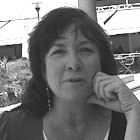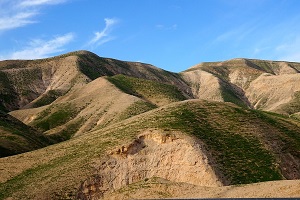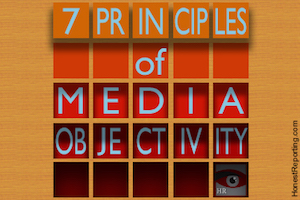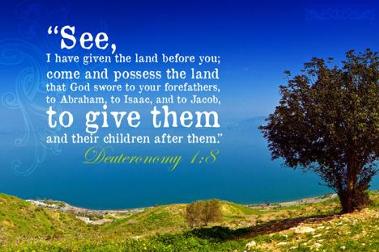Indigenous Archaeology: What Has It Got To Do With Arabs In Haifa?
By Sheri Oz

When a respected archaeology journal accepts a paper that categorizes a population as indigenous when it is not, it cannot be allowed to stand unchallenged.
Archaeologist Dr. Talia Shay taught at the Technion in Haifa until 2013. There is little online evidence of professional activity since then but she did publish a new article this year in a respectable international journal: Archaeologies. Archaeologies is rated in the top quartile of about 250 archaeological journals around the world. This makes her article worth reviewing because it is a contribution to growing attempts to disavow Jewish indigenous status in Israel and anoint the Palestinian Arabs as the indigenous people.
Her article is called, "The ethnocracy of the Palestinian urban space and the indigenous approach: Praxis and theory". She based her paper on a treatment of the neighbourhoods in Haifa where the majority population is Arab. Here is the abstract:
"This article is a case study of the Palestinian recent past that produces a new knowledge on the maltreatment given to the archaeological remains of the Palestinians in the Late Ottoman period (18th to 20th centuries) by the dominant culture in Israel. The inequitable representation of the Palestinian-Ottoman heritage by the state creates both submission and resistance to the prevailing culture by the Palestinian citizens. The new knowledge created by this case study may be further used in order to understand the diverse experience of marginality of various contemporary dispossessed and displaced groups."
Already in the abstract, we can see distortions: (1) The "Palestinian recent past" from the Late Ottoman period can be seen as including the Jewish residents as much as the Arab population of that time but she uses the term to depict the Arabs alone. (2) There are no "Palestinian citizens" in Israel since Palestine is not yet a state that offers citizenship to anyone anywhere, not even in the area administered by the Palestinian Authority. Shay is referring, in fact, to Arab citizens of Israel, some of whom refer to themselves as Palestinians as a political statement. Any Jew descended from a Jew who lived in pre-1948 Israel could also call himself or herself a Palestinian. (3) Shay states that her paper will allow generalization from the "Palestinian" Arab-Israeli situation of Haifa to that of dispossessed and displaced groups in other lands. But the Arab-Israeli citizens living in Haifa are neither dispossessed nor displaced. Yes, there are former residents of the city who left the region by 1948 because of the war between Arabs and Jews, but her paper is not about them; it is about those who did remain in Haifa.

The Big Mosque from the 1790s. Downtown Haifa. Its clock tower was the first of 7 clock towers built in Israel. Photograph is my own.
Shay is open about her bias and that is laudable. Interpretation of archaeological finds, like interpretations of other primary source data, is necessarily subjective and perhaps all academics should make clear their personal biases regarding the subject matter:
"Let me note that in the absence of power to change matters in this conflict, my minor contribution is composed of my efforts to expose some of the mischief done toward the Palestinian minority by the Israeli authorities within my profession."
I think my personal bias is clear to any who have been following my writings on this website: I believe the indigenous population of Israel to be the Jews; the Arab population is made up of the descendants of colonialists who have lived here for centuries and migrants who arrived during the 19th and 20th century up until 1946. Therefore, my critique of her work must be seen as consistent with my bias.
Indigenous Archaeology
Indigenous archaeology is the term applied to cooperative ventures in exploring relics and remains together with the living descendants of those who laid down these structures and artifacts so that the descendants of the dominant colonial culture do not take over exploration of the history of the former. The bulk of examples in the literature pertain to archaeological digs taking place in Australia and the United States with Aboriginals and American Indian tribes, respectively.
In applying this term to her studies of Ottoman period structures in Haifa, she is claiming indigenous status on behalf of Israeli Arabs. Yet, in a post on her blog, Shay writes:

"In Israel most of the Palestinian remains dated to the late Ottoman period from the 18th century and on, are found in the older sectors of “mixed cities” of ethnic divide. These remains have been transformed by local authorities into either gentrified parts or into Orientalist “premodern” tourist sites that are no longer related to the Palestinian heritage. This attitude toward the Palestinian remains stands out in contrast to the extensive reconstruction of Jewish remains, both ancient and recent."
Israel's history did not begin in the Ottoman period, early, middle or late, but much much earlier, and Shay acknowledges that fact when she writes above about "Jewish remains, both ancient and recent". Amazingly, she writes:
"Prior to my documentation of the Palestinian archaeological remains and the authorities’ attitude toward them, a short history of Haifa is offered here. Modern Haifa was built in the 18th century by Dahr el Omar, a Bedouin who revolted against the Ottoman regime. However, it was only with the construction of the harbor and the Hejaz railway by the Ottomans in the beginning of the 20th century, which connected Haifa to the holy Moslem cities that gave it its importance."
And here she disingenuously avoids mentioning the rich history of Haifa, beginning with the fact that Mount Carmel upon which part of the city was built and the Kishon River alongside it, are in the Torah. The town was overshadowed by Acco just to the north, but it was populated throughout the ages, ravaged by the same empires that sent Jews scattering from all parts of Israel, long before Ottoman times.
It puzzles me, therefore, how she can refer to the Israeli Arabs as the indigenous population when she admits that Jews were here long before the Arabs (who only came in about 640 CE as invaders and colonialists).
Community Archaeology
It would be more correct to refer to her work with Israeli Arabs on the archaeological examinations of their neighbourhoods in Haifa as "Community Archaeology" rather than "Indigenous Archaeology". There is equal value in conducting archaeological studies with the communities descendant from those who established them whether or not they are part of the indigenous population. All minorities, regardless of the length of time they have been in the country, have important stories to tell and control over the unearthing of their histories and the telling of them should belong to them. . . as long as they do not try to rewrite history to create a "narrative" that distorts history for political purposes.
This was originally posted in Israel Diaries
UPDATE: I submitted a more academic version of this article to the journal in which Shay’s article appeared and the journal published my article and Shay’s response. Click here to read it online.
Recommended:
DECLARE YOUR PRIDE
Join a global Jewish community that connects people from around the world who share a connection to Israel today!
About the Author








